Kayaking is a great way to work out your whole body. It uses muscles from your head to your toes. It works all of your major muscle groups. It’s a fun way to get outdoors, enjoy the water and get in a good workout.
If you are looking for an exciting way to get some exercise while enjoying nature’s beauty, kayaking is a great option. In this blog post, we will discuss the topic “what muscles does kayaking work?”. So, let’s dive into it.
Contents
Contents
What Muscles Does Kayaking Work?
Kayaking is a unique exercise that works a large group of muscles from your shoulders to the legs and hips. Many people don’t realize how much of an aerobic workout kayaking can be. As you push and pull the paddle with each stroke, different muscle groups are engaged to propel the boat forward. Muscles that work together to help you kayak are as follows:
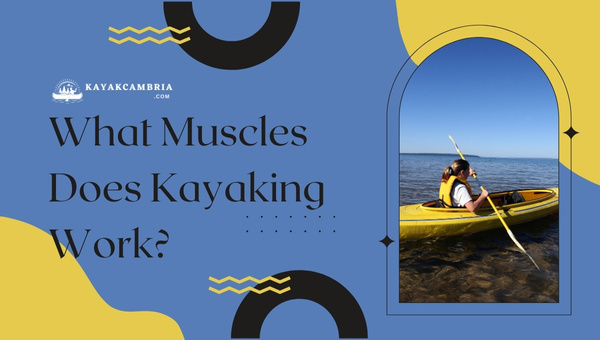
- Back muscles
- Shoulder muscles
- Chest
- Core
- Arms
- Legs
We will discuss each of the stated muscles in brief.
Back Muscles : Latissimus Dorsi, Rhomboids, Trapezius
One of the most important muscle groups that kayaking works on is the back muscles. Back muscles are used to help keep you upright in the kayak seat for long periods. The three main muscles that work when you do kayaking include the latissimus dorsi, trapezius, and rhomboids.
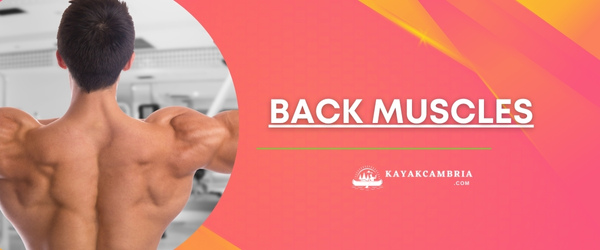
These muscles distribute power from the back to the lower body
- Latissimus Dorsi: The latissimus dorsi, also known as the “Lats”, is a large muscle that stretches from the lower back to the arms. When you paddle, this muscle helps transfer energy from your back into your arms. Each stroke taken with kayaking strengthens this muscle and makes it more efficient.
- Rhomboids: The rhomboid muscles are located in the middle of your upper back. They work to rotate the shoulder blades and are used when you paddle, helping with each stroke you take. This muscle also helps maintain good posture while kayaking and is important for good form. The rhomboids tighten as your shoulder blades go toward your spine at the end of a kayak stroke.
- Trapezius: The trapezius muscles are located below the rhomboids and the lats. These traps are divided into three sections-upper, middle, and lower. The upper traps help you move your shoulders during each stroke of kayaking. The middle and lower trap muscles are used more when paddling in a kayak, helping to further propel the boat forward. They are essential muscles for kayaking and help build strength in the upper body.
Shoulder Muscles: Anterior, Rear, And Lateral Deltoid
The shoulder muscles are responsible for the power of your paddle stroke. The three main muscles that work when you do kayaking include:
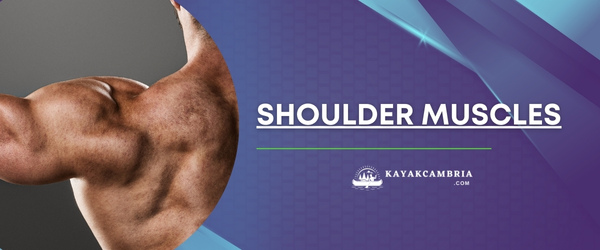
- Anterior Deltoid: The Anterior Deltoid is the closest muscle to your chest. This muscle helps raise your arm when you reach for a paddle stroke and pulls it back down when you return the paddle to the water.
- Rear Deltoid: The Rear Deltoid is located at the back of your shoulder and helps pull your arms back when you take a stroke.
- Lateral (Medial) Deltoid: This deltoid is the one located in the center of your shoulder and helps with the ability to rotate your arm when taking a paddle stroke.
When all of these muscles work together, they create power from your back muscles through your arms and help you complete a paddle stroke. Correct paddling techniques are important to avoid injury and it is important to practice maintaining the “paddler’s box” which works from your shoulders to the arms, and across the chest.
Chest Muscles
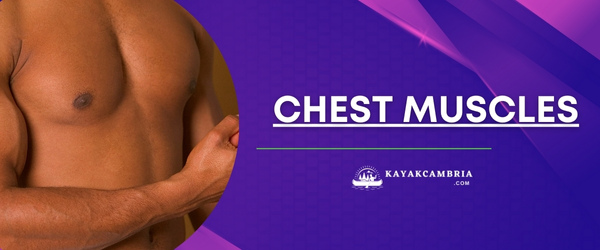
The chest muscles are equally important for paddling. The main muscle group that is engaged when kayaking is the pectoralis major. This muscle works to move your arm with every stroke. Additionally, the chest muscles help to keep your shoulder steady and stable. They also support the paddle stroke motion and help push the blade forward through the water.
Core Muscles
The core muscles are also essential for kayaking. The core muscles consist of the abdominals and obliques. One way to engage these muscles when kayaking is to use them to rotate the paddle with each stroke. It is also important to utilize your abs in more than one way when kayaking.
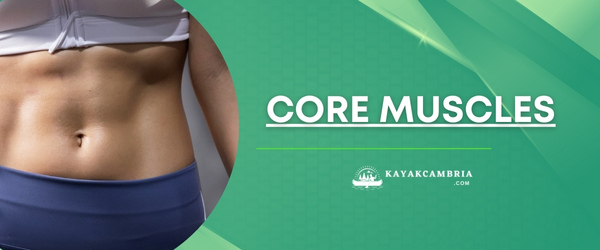
When you first start kayaking, your muscles may not be used to complete the full workout, leaving them feeling sore and tired. However, with consistent practice, you will find that your core muscles make kayaking easier as they help build strength and stamina over time.
Furthermore, core strength also helps to build six-pack abs as you continue to use your core muscles while kayaking.
Arms Muscles
The arm muscles are responsible for propelling the boat with each stroke. The upper arm muscles, including the biceps, triceps, and lower arm muscles including forearms, and gripping muscles all work together to finish a kayak stroke correctly.
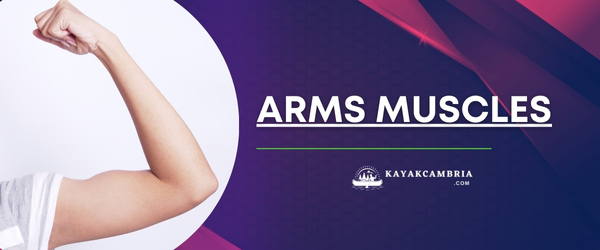
The biceps and triceps help provide powerful rotation when you paddle while the forearms and gripping muscles are used when you paddle. By using all of these muscles together, you can create a strong and efficient paddling motion. Additionally, it is a strength-building workout for your arms will help you become stronger throughout each kayaking stroke.
Kayaks have a double-blade design, which helps to tone and define the muscles in your arms more efficiently. The more frequently you paddle, the stronger these muscles will be.
Legs Muscles
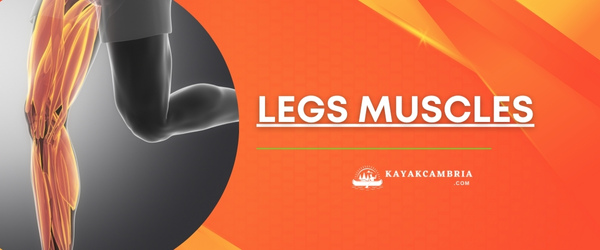
Finally, the leg muscles are important when kayaking because they help to stabilize the rest of your body while you paddle. The leg muscles work to push off against the foot pegs or braces with each stroke at the bottom of your boat and help you balance with every movement. When paddling longer distances, your leg and hip muscles will become stronger.
Which Muscles Does Kayaking Work the Most?
While kayaking, the muscles in your chest, back, arms, and legs all work together to create power and stability. But the important muscle groups which work the most are the core and back muscles. The core muscles help to stabilize the body, while the back muscles create power as you complete a stroke.
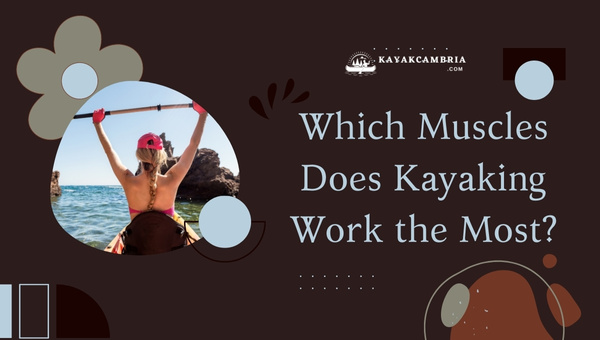
Legs and arms are also important as it helps to stabilize and balance the kayak but the core and back muscles are the most used when kayaking.
Frequently Asked Questions
1. Is Kayaking a good workout?
Yes, kayaking is an excellent cardio workout and helps to tone your muscles. It is also beneficial for building strength and endurance as it uses the muscles in your arms, chest, back, and core.
2. What muscles does kayaking work in the back area?
The back muscles that are used most when kayaking include the latissimus dorsi, rhomboids, and trapezius. These muscles work together to help propel the paddle through the water as well as provide stability during each stroke. Additionally, they also help to keep your shoulder steady and stable.
3. What muscles does paddling a kayak work?
Paddling a kayak works the muscles in your arms, chest, back, and core. It is also beneficial for building strength and endurance as it uses all of these muscle groups together.
4. Does kayaking burn belly fat?
Yes, kayaking can help to burn belly fat as it is an excellent cardio workout. Additionally, the core muscles are engaged throughout the entire paddling motion, which helps to tone the abdominal area.
Final Words
Kayaking is an excellent full-body workout that engages the muscles in your arms, chest, back, core, and legs. The most important muscle groups used are the core and back muscles as they help to propel you through the water with each stroke.
With the help of this blog post “what muscles does kayaking work?” we hope that you have a better understanding of which muscles are used most when kayaking. So get out there and enjoy the water while getting a great workout! Thanks for reading!

